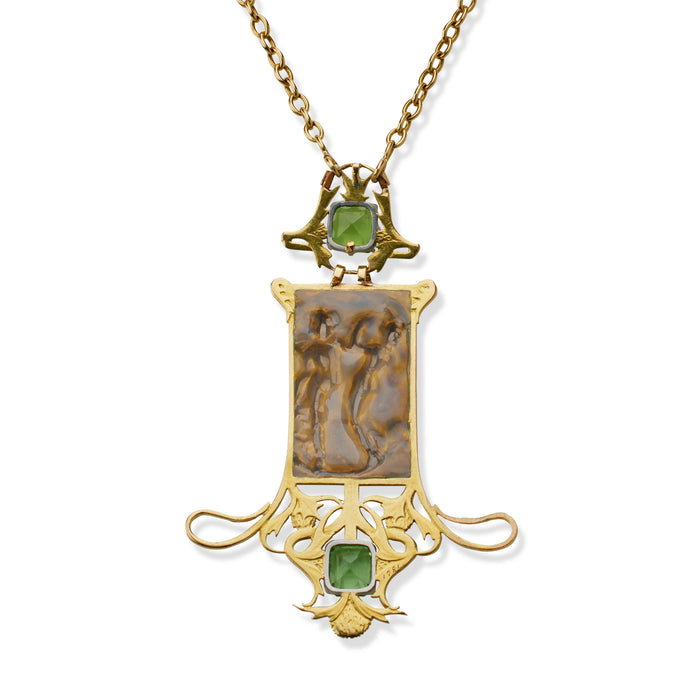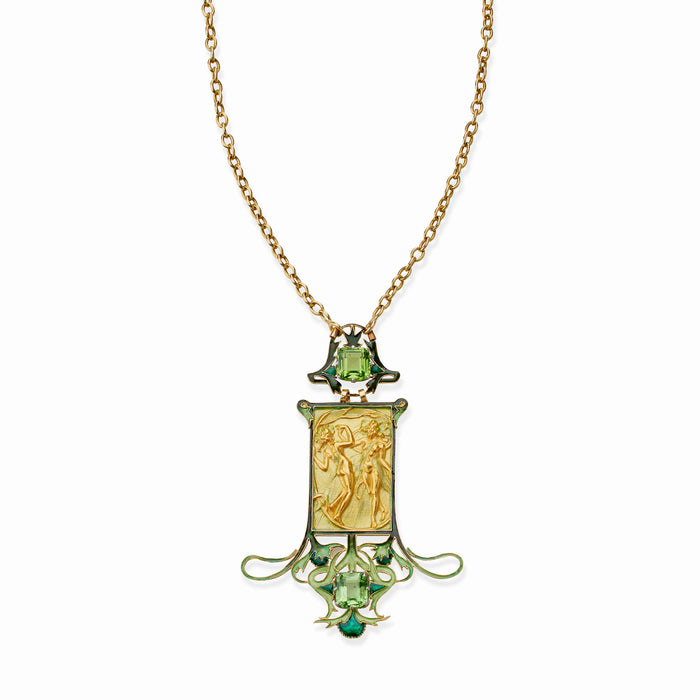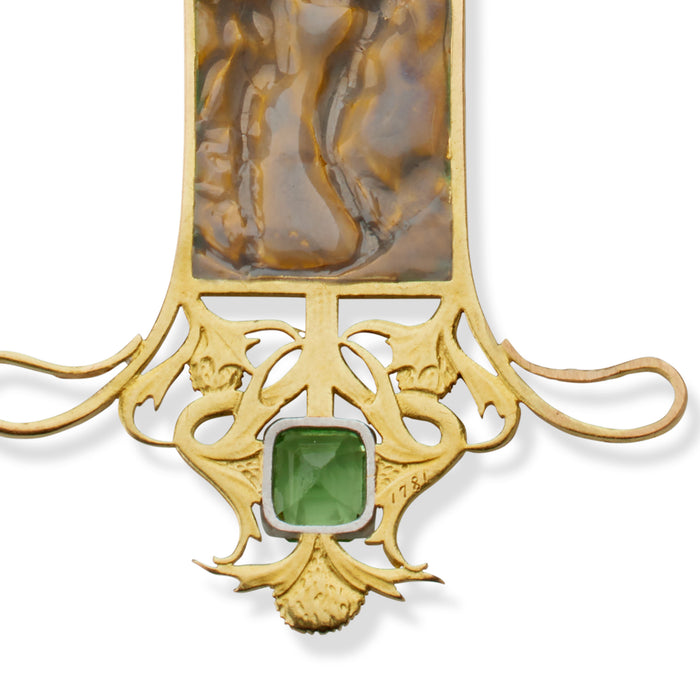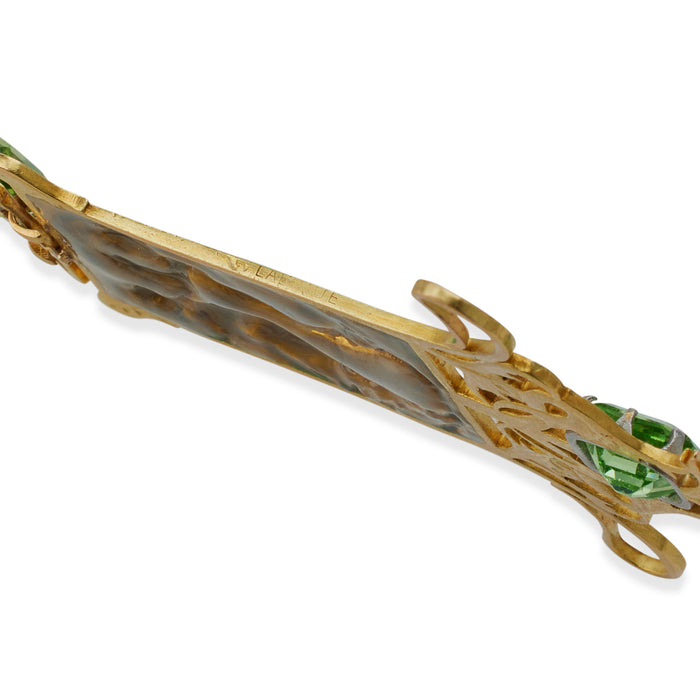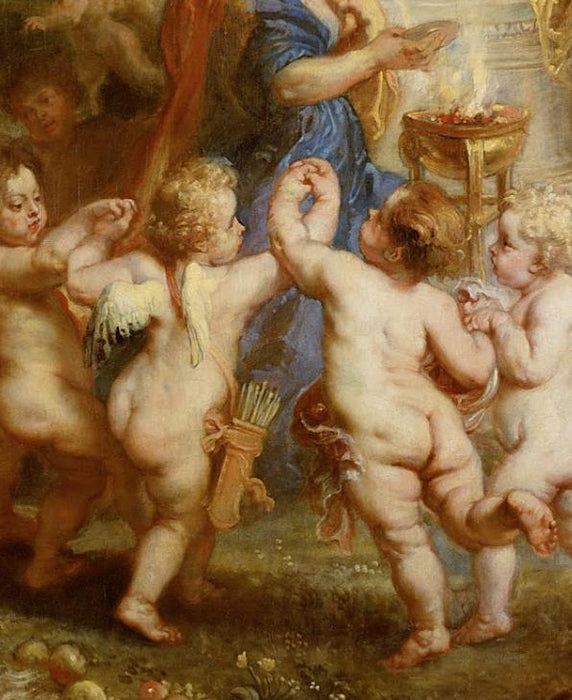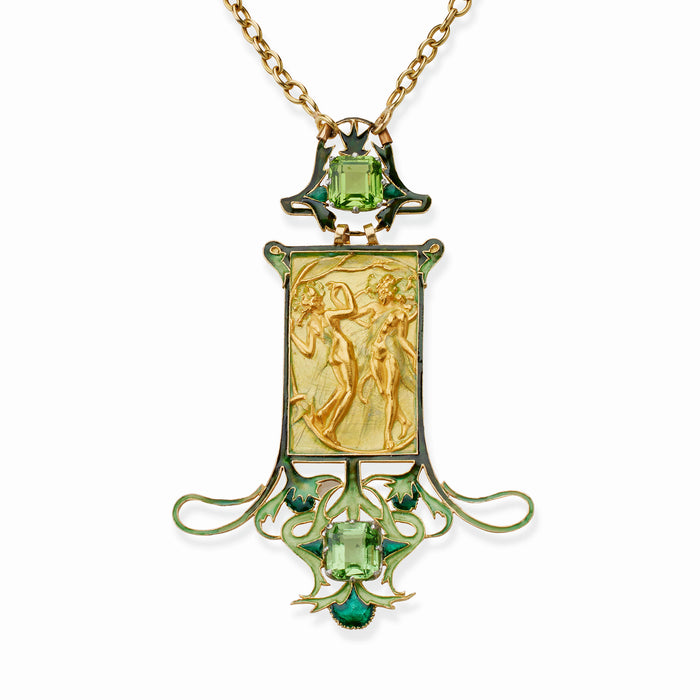
René Lalique 18K Gold Peridot and Enamel Dancing Figures Pendant Necklace
$95,000
Created around 1898-99 by René Lalique, this pendant necklace of "deux figurines dansant" is composed of peridot, champlevé enamel and 18K gold. The pendant is designed as a rectangular chased gold plaque depicting two figures in relief, against a background of pale green enamel, with hands interlaced as they dance in a circle, one partly veiled in en plein enamel, in a wooded glade, the reverse counter-enameled, within a frame of green thistle of Lorraine blossoms, seed heads, thorny leaves, and sinuous stems in shades of green enamel, highlighted by two step-cut peridots, suspended from a later trace link chain. Celebrated in Roger Marx's 1899 review hailing Lalique as a "master French decorative artist", the dancer relief of this jewel personifies the spirit of nature, not only in the abstract, but in the artist's most beloved place, the woodlands and meadows of Eastern France.
- Product Details
- Curator's Notes
Item #: N-21370
Artist: René Lalique
Country: France
Circa: 1898-1899
Materials: 2 emerald-cut peridots; Enamel; 18K Gold
Signed: LALIQUE 1781
Literature: A similar jewel incorporating the figural gold pendant featured in this necklace appears in The Paris Salons, 1895-1914- Jewellery II, The Designers L-Z, p. 33. A now lost gold "projet de pendant" for the figures, within a modified surround, was illustrated in "Les Maîtres Decorateurs Français: René Lalique", by Roger Marx, Art et Décoration, July 1, 1899, p. 21.
Lalique had begun experimenting with jewelry inspired by his original blending of Classicism and Japonisme as early as 1888, uniting sculpture, goldsmithing, enamel, and gem-setting in jewels intended to represent "total art work", a reigning concept motivating artists of the period. Though relatively diminutive, this jewel belongs to that group.
Illustrating its impact, an alternate, all-gold model of pendant designed with these dancing figures was selected for illustration by Roger Marx in his laudatory 1899 essay on Lalique in Art et Décoration, in which he called the artist "emancipator of French jewelry". Referring to the design of the jewel's central relief, Marx wrote that each figure both "veils and capriciously reveals its flexible nudity". There was no jewelry form that the artist had not "renewed", Marx commented, in his "small, intimate goldsmithing".
Lalique was encouraged in his exploration of sculpture arts by his friend Sarah Bernhardt, and by collaborators, the Ledru father and son, who were associated with Rodin. This sculptural relief in gold was likely reduced on a lathe from a larger model. Lalique was by this time a master of "tour-à-reduire", having applied to his own work this technique adapted from the medalists' art. He had first exhibited a sculptural relief (a cover for a music case designed for Wagner's "Die Walkyrie") crafted with the reducing lathe at the 1894 Salon de la Société des Artistes Français.
Chasing of the relief may have been undertaken in house by one of Lalique's thirty artisans, closely supervised by the master, or by one of his few associates, Georges-Pierre Deraisme (1865-c.1930), who was accustomed to working weekends to complete the artist's orders. Otherwise, records of plant and equipment in Lalique's rue Thérèse workshop indicate that the enameling and stone setting were carried out in-house. In the 1890s, though working around the clock, Lalique and his team produced only around 15-20 works per month.
Relatively early and rare to find, unified in concept, design and execution, this small Lalique jewel is a complete and complex work of art, skill and intellect.

